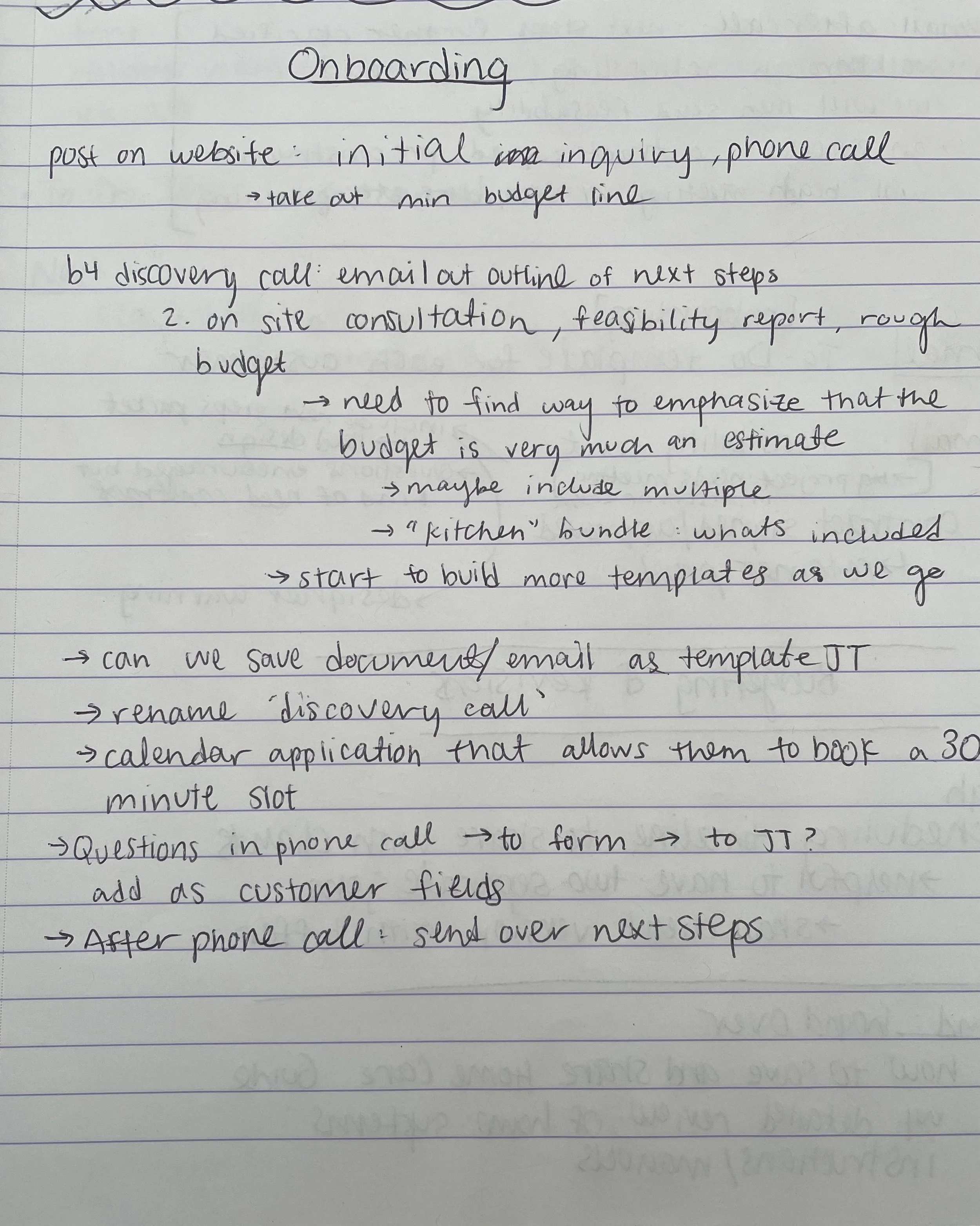Creating Visual Timelines to help Clarify Project Roadmaps for a Construction Company
Goal: Create a graphic that organizes the project timelines into a simple timeline of events
The project manager was spending significant time on calls explaining the company’s project process and timeline to potential clients, many of whom did not move forward. She needed a clearer, more efficient way to communicate the early project stages. While each project varied, a consistent timeline existed within internal notes and documentation; so I extracted and formalized it into a visual guide. This not only streamlined client communication, but also gave the project manager a clearer reference to support internal workflow and consistency.
The Final Designs
The Process
-

1. Gather Information
I met with the project manager to walk through the existing client onboarding process, documenting each step and key insight along the way. From these notes, I began organizing the information into clear structures and concepts that could later be translated into visual and strategic solutions.
-

2. Create a Rough Draft
Next, I explored different timeline layouts and visual approaches to best communicate the information. During this stage, I sketched concepts by hand and used a sketching app on my iPad, allowing me to quickly iterate and experiment with ideas.
-

3. Create a Mock-Up
At this stage, I brought my sketches into Canva to develop a digital mock-up. For this project, the final graphic remained close to the original mock-up, though the level of iteration always varies depending on client feedback and how quickly the design direction aligns.
-

4. Submit for Review/Testing
At this stage, I shared the design with the project manager for feedback and potential revisions. They were pleased with the overall direction but requested varying levels of detail to align with different project stages. This feedback led me to expand the project into a series of graphics, each tailored to specific phases of the client journey.
-

5. Make Changes based on Feedback
Returning to Canva, I developed multiple versions of the graphic with varying levels of detail, ensuring each stage delivered the right amount of information'; clear and informative without overwhelming the client.
-

6. Repeat steps 4 & 5 until Satisfied
From there, I continued refining the designs through feedback and iteration until the final graphic clearly communicated our intended goals. While the current version effectively serves its purpose, it remains flexible; open to future updates and adjustments as project needs evolve.


